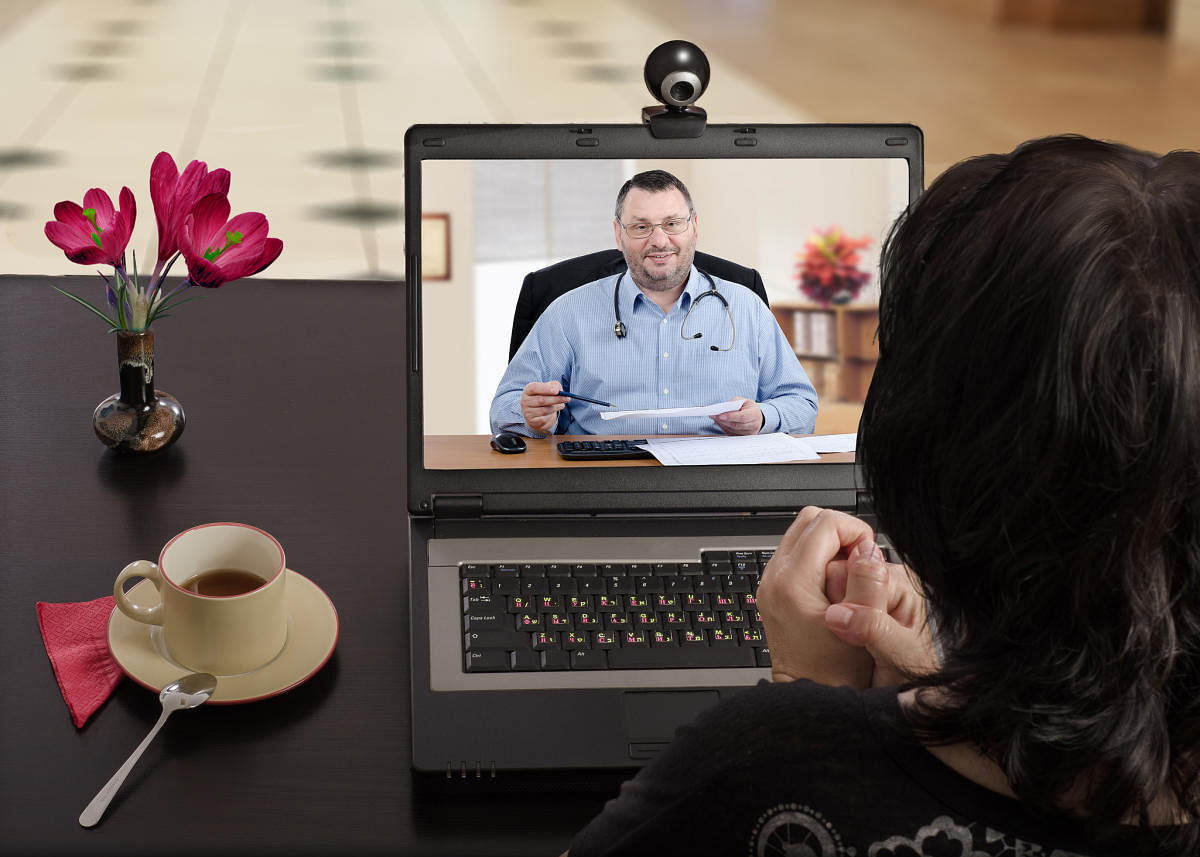
With rising medical concerns, increasing deadlines and bad traffic, telemedicine are a growing medical fad in the city. Doctors in the city believe that more than 20 per cent of the city’s population is open to consultation through WhatsApp, video calling and phone calls now.
Doctors vouch that such consultations help patients but the risks are aplenty. Dr Chandil Gunashekar, general physician at a clinic in Basavangudi has been practising telemedicine for a while. “Telemedicine can be understood as consultations happening over mobile applications which include a number of doctors and also where one’s patients call and ask for medical advice,” he says.
“Consultations over mobile applications are just like a virtual consultation. I only do 15 such consultations in a month. Friends and patients, calling with symptoms of cough, cold and fever are common. It’s all about convenience and younger medical professionals are more open to telecommunications,” he adds.
Dr Chandil adds, “Bengalureans are increasingly loving the option- more than 25 percent of the population checks for medical advice via WhatsApp, mobile applications or on phone calls. My peers and I have an understanding that we will suggest medicines or treatment to only those patients who have come for a consultation at least once. We also insist on a follow-up meeting after a virtual diagnosis. According to the Karnataka Medical Council, we have to keep a record of the number of patients, their medical history and physical examinations and we try to stick by that.”
Dr Banarji B H, senior consultant and head of shoulder and upper limb division, Sakra World Hospital, points out that sometimes telemedicine become inevitable. “There are many advantages and disadvantages to it. Patients who have already consulted me or patients who have just undergone a surgery call to check for certain symptoms they face. It works great for second medical opinions but should never be assumed as the primary healthcare option. This option is used by more than 20 percent of the city’s population,” he says.
Patients in remote areas can seek telemedicine. “Consultations about elective surgeries can be done over this medium,” he adds.
Risks of missing information or misdiagnosing occur via telemedicine, adds Dr Santosh S, consultant-ENT, Columbia Asia Hospital. “The option works great for first aid. One can avoid a waiting period at a clinic and travel time, but one has to understand that such a diagnosis relies entirely on the information shared by the patient over a call as the doctor doesn’t see the patient. A scope for error always exists here, which is why often doctors suggest only general medications,” he adds.
Dr Santosh points out that more than 40 percent of the city’s population is comfortable with telemedicine.
“This segment mostly consists of young professionals who have crazy work schedules and deadlines,” he adds.
Dr Deepesh Venkatraman, interventional cardiologist, BGS Gleneagles Global Hospitals, points out that the telemedicine practices can be differentiated into real-time telemedicine, where doctors can interact with patients over Skype or video-calling and exchange reports and is mediated by a doctor or trained medical personnel and asynchronous telemedicine, where the reports are collected at a centre and is then transmitted, where they are interpreted and the information is passed on.
“The third is remote monitoring where the patient doesn’t come to a medical centre and information keeps reaching the doctor’s clinic. Telemedicine is being used as a tool worldwide to deliver advanced monitoring and treatment. It has become one of the best methods to treat heart failures and detect arrhythmia, which can help to get the parameters of a patient’s pacemakers changed or implanted. This has led to decreased episodes of collapses globally,” he details.
Dr Deepesh points out that telemedicine technology is not up to the mark here. “Mediators at telemedicine centres are not equipped enough and essential information can be missed in the process. When medical data collected is not real-time, the doctor has to work with whatever is available. The capturing quality of medical data like an ECG can be sub-standard which can lead to further misinterpretations,” he adds.
The medico-legal angle is another worrisome side to telemedicine. “If telemedicine have any legal sanctity and if data shared over SMS or telephone can be used for diagnosis is a risky matter. There have been court cases which have clearly stated that data shared through video-consultation is not permissible. This is risky for both the patients and the doctors,” he adds.
When is it okay?
Use
Cases of cold, cough and fever.
Cases for diet changes or consultation.
Light symptoms like a headache
Don’t use
Chest pains
Difficulty in breathing
Asymmetry of the face/Chances of a stroke
Any critical condition
‘Medical council should set up standards’
“For telemedicine to be successful in the state, the Karnataka Medical Council should set up standards for equipment and personnel involved. There should be proper laws and regulations laid out for what is legal and allowed and what isn’t.”
Dr Deepesh Venkatraman, Interventional cardiologist.